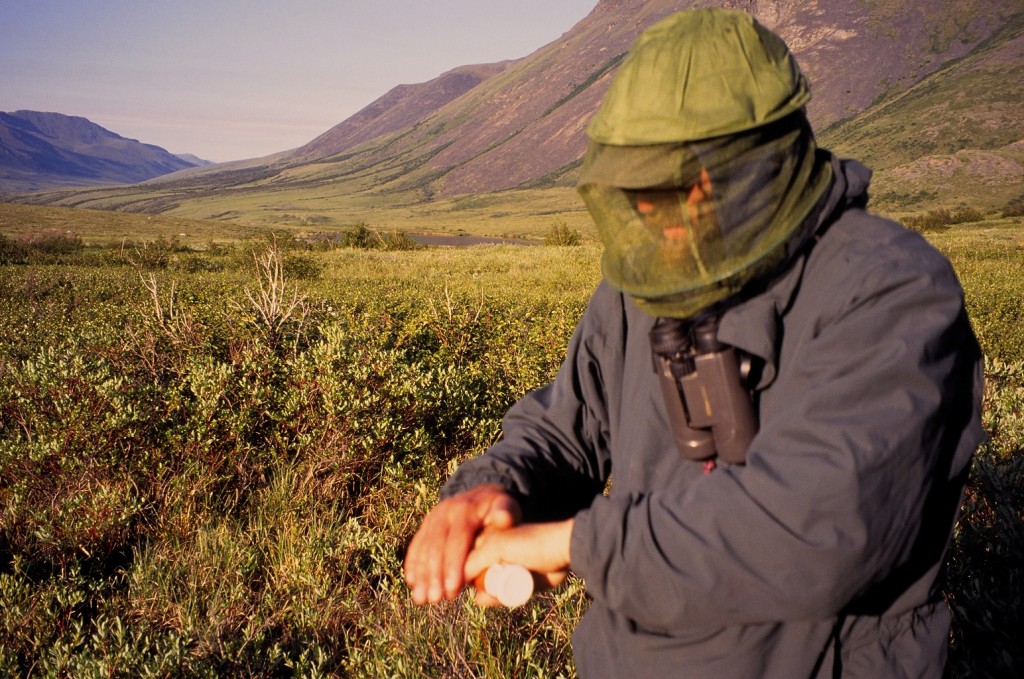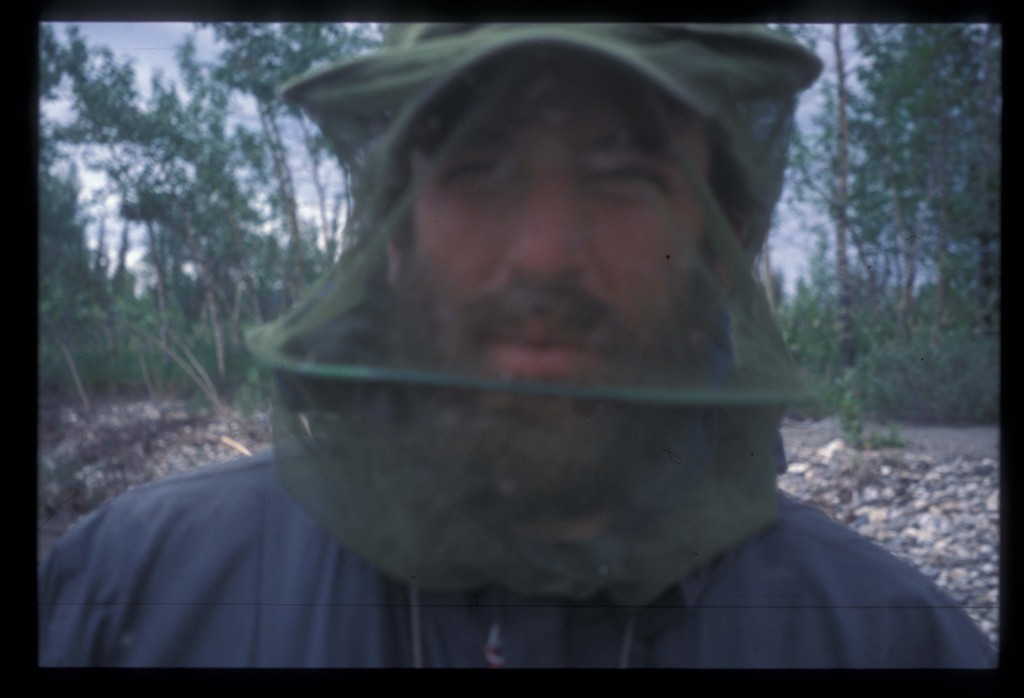People in Alaska talk about mosquitoes the way they talk about the weather. They ask, “how were the bugs?” when you get back from a camping trip, because the truth is, whether or not they were present, and at what level can really make or break a trip.
I’ve been in some bad bugs. The worst was early June in Yukon-Charley National Park in 2001. I was doing songbird inventories for the National Park Service in dense black spruce forest in the middle of the night. The bugs were so bad we had to raise our voices to talk over them. We ate by shoving food inside the headnet. We wore gloves even when it was 70 degrees out. Our every movement was planned around trying not to get bit. When bugs are at their peak they can be truly awful.
But here’s the other truth: You can avoid the bugs with careful planning. You just have to know when to go. That trip to Yukon-Charley was a research trip, timed so that we could identify songbirds at their peak singing periods exactly when the bugs are at their worst. Ditto for the video from Denali National Park. When we plan our schedule of trips each year one of our primary goals is to to avoid the worst of the bugs. You may have noticed that our Arctic trips are concentrated in June and August. June is still early spring in the arctic, and the bugs aren’t out yet. By August the little buggers have already peaked and died. By scheduling trips to before the bugs hatch and after they die off, our guides spend very little time wearing head-nets. July in the Arctic can be dicey. And that’s why you’ll find us on the coast with the caribou catching a cool breeze off the Arctic Ocean. Or in Katmai National Park or the Aleutians. We don’t like swatting bugs and we work hard to stay out of the places we know they will be.




